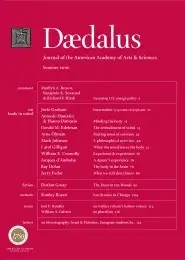The body in the brain
In J. M. Coetzee’s novel Elizabeth Costello, the protagonist, fictional author Elizabeth Costello, delivers a prize lecture entitled “The Lives of Animals.” Costello contrasts reason, exemplified by the Descartian credo Cogito Ergo Sum, with what she describes as
fullness, embodiedness, the sensation of being–not a consciousness of yourself as a kind of ghostly reasoning machine thinking thoughts, but on the contrary the sensation–a heavily affective sensation–of being a body with limbs that have extension in space, of being alive to the world. This fullness contrasts starkly with Descartes’ key state, which has an empty feel to it: the feel of a pea rattling around in a shell.
Here, Costello radically asserts that consciousness is multilayered–and that a fundamental layer is ‘embodiedness,’ the representation of our body in our brains. She later points out that embodiedness provides a sentient bridge between human consciousness and that of animals.
In making the seemingly paradoxical claim that bodily and mental states are intimately conjoined, Coetzee, via his fictional alter ego, raises a provocative question, one that a neuroscientific analysis, let alone a definition, of consciousness has yet to address. His account of consciousness echoes a similar challenge William Golding made in The Inheritors, which extensively documents the mental lives of Neanderthals–where thought and felt experience, engendered by perturbed bodily states, are indistinguishable.
I cannot claim to rise completely to the challenge of explaining the continuities between representations of the corporeal self and the conscious self. Nonetheless, I will approach it, starting by accepting the general premise, articulated most eloquently by Antonio Damasio, that the brain’s representations of bodily states are fundamental to our ongoing mental experience.1 As Damasio stated, “We only know that we feel an emotion when we sense that emotion is sensed as happening in our organism.”2 In this essay, I will address what we currently know about how our brains generate and, in turn, remap one component of bodily states, specifically those mediated by the autonomic nervous system. My choice of the autonomic system reflects not only my own scientific interest but also the fact that the autonomic nervous system provides the most dynamic mapping between the body and brain and vice versa. . . .
Access the full volume here.
